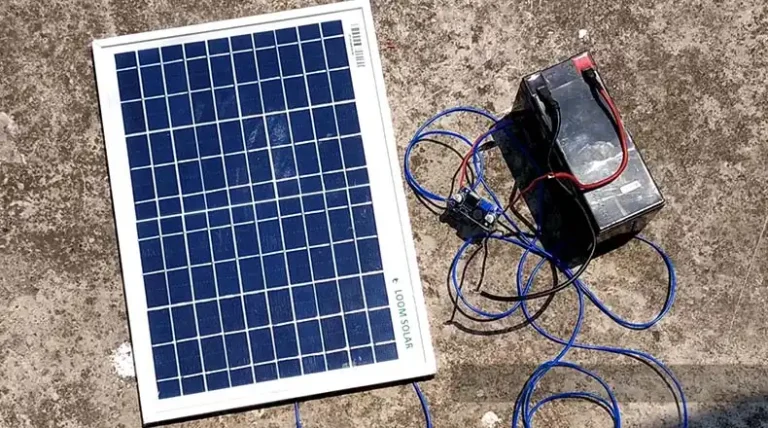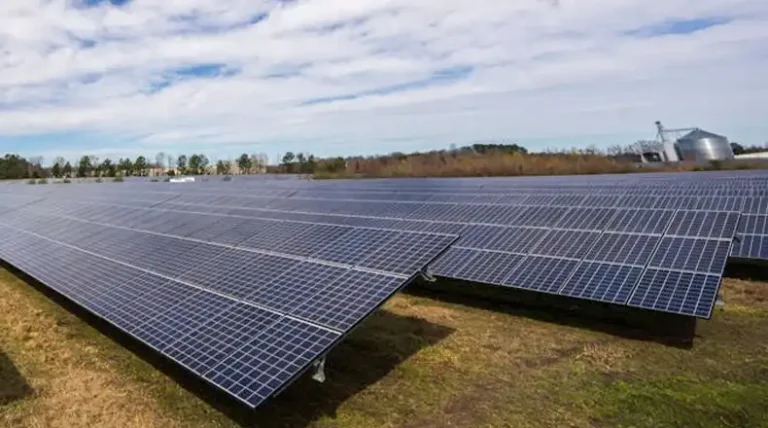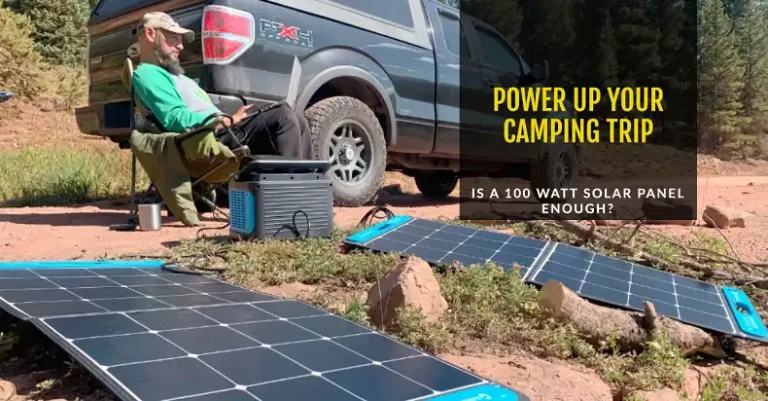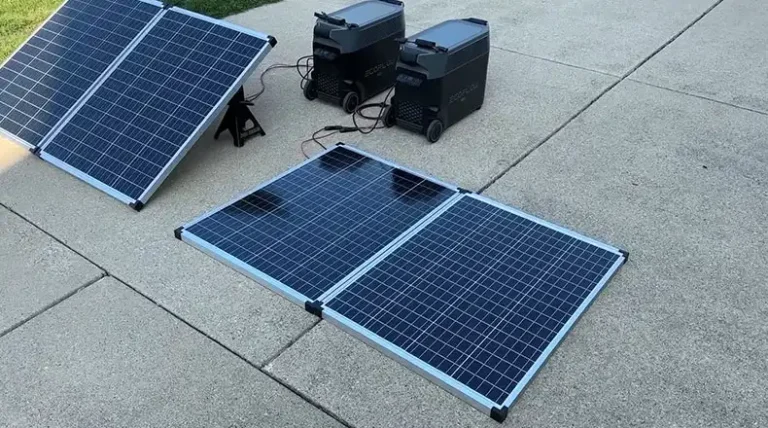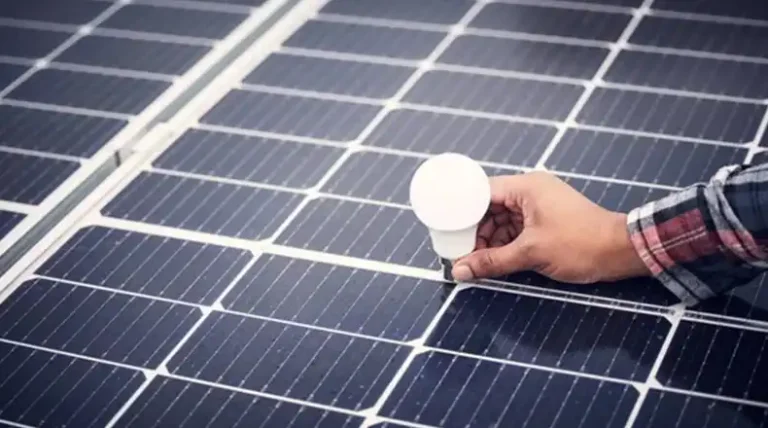Does Solar Panel Voltage Fluctuate? Is It Normal?
The solar energy sector has been growing at an exponential rate, with more homes and businesses adopting solar panels. However, some people are hesitant to install solar panels due to concerns about power fluctuations. So does solar panel voltage actually fluctuate?
Unfortunately, the answer is yes, solar panel voltage does fluctuate throughout the day. The voltage produced by solar panels depends on several factors like sunlight intensity, temperature, and load on the system. However, there are ways to manage these fluctuations through proper system design, component selection, and installation.
In this guide, I have discussed the reasons behind solar voltage fluctuations, how much fluctuation is normal, and various techniques to stabilize voltage from solar panels. So read on to get a detailed understanding of this critical aspect of solar PV systems.
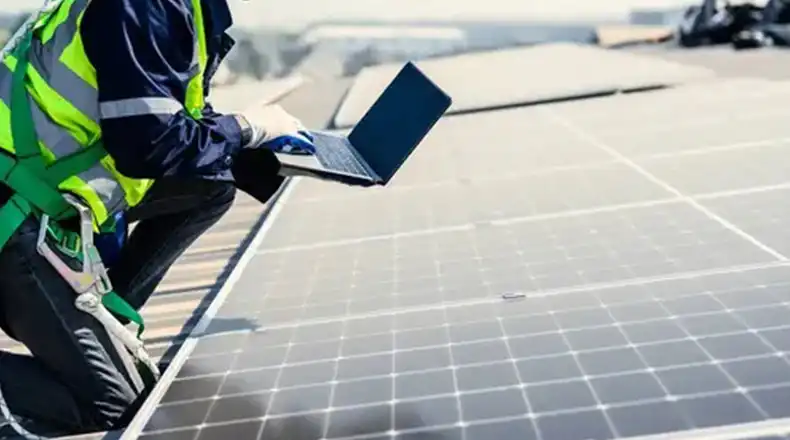
What Causes Voltage Fluctuation in Solar Panels?
There are several factors that can cause the voltage from solar panels to rise and fall throughout the day:
1. Variations in Solar Irradiance
The most significant factor affecting solar panel voltage is changes in solar irradiance, which is the power per unit area received from the sun in the form of electromagnetic radiation. As irradiance increases, the solar panels produce more current and voltage rises.
The irradiance level depends on the time of day, as the sun’s position in the sky changes. The maximum irradiance occurs at solar noon when the sun is directly overhead. In the morning and evening hours, solar panels receive angled light, reducing irradiance and voltage generation. Passing clouds can also temporarily block sunlight and cause voltage drops.
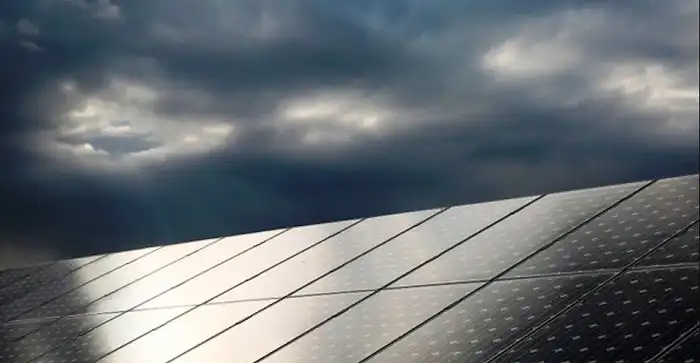
2. Temperature Effects
Solar cell temperature has an inverse relationship with voltage. As the temperature rises, the voltage drops slightly. This effect is more prominent with crystalline silicon panels that are sensitive to temperature changes.
On hot sunny days, solar panels can reach temperatures over 45°C lowering the yielded voltage. Cooler panels in winter will exhibit higher voltages. Proper ventilation and air circulation can minimize excessive heating of the panels.
3. Soiling and Shading Effects
Soiling from dirt, dust, bird droppings, and pollen can partially block sunlight to the solar cells reducing power generation. Even a small amount of shading from nearby trees or structures can bring down the panel voltage significantly.
Regular cleaning of solar panels is essential to avoid soiling losses. Careful site assessment and planning are required to avoid shading on the array, especially in dense urban environments.
4. System Configuration and Components
The number of solar panels connected in series and parallel, inverter selection, and electrical connections affect the voltage delivered to the loads. Overloaded AC cables can cause voltage drop due to resistive losses.
In some cases, faulty or underperforming system components like solar optimizers, charge controllers, and batteries can be the underlying cause of voltage fluctuations.
5. Load Variations
The amount of load drawn from the solar system determines the operating voltage of the panels. Sudden connections of large electrical loads like motors or compressors can pull down the voltage momentarily.
Similarly, switching off appliances on the solar circuit will raise the system voltage. These effects are more pronounced in small off-grid PV systems powering direct DC loads.
How Much Voltage Fluctuation Is Normal for Solar Panels?
While solar panels do exhibit voltage changes during operation, the fluctuations remain within a typical range under normal working conditions:
- Voltage at Standard Test Conditions (STC) – This is the rated voltage of the solar panel with 1000 W/m2 irradiance, 25°C cell temperature, and 1.5 air mass. For a standard 60-cell crystalline silicon panel, this voltage is around 30-40 V.
- Open-Circuit Voltage (Voc) – Measured with no load connected, Voc can reach 45-50 V for a typical panel, depending on temperature and irradiance. It may go up to 10-15% higher than the STC voltage.
- Maximum Power Point Voltage (Vmpp) – At the point of maximum power output, the solar panel voltage is generally 30-40 V, around 80% of the Voc.
- Operating Voltage – Under real-world conditions, solar panels operate in the range of 27-38 V depending on weather, load, and other factors. Rapid fluctuations beyond this range indicate potential issues.
As an example, a 300W solar panel with specifications of Voc = 45V, Vmpp = 36V may operate between 30-42V during the day. Voltages outside this range may indicate suboptimal performance or faults.
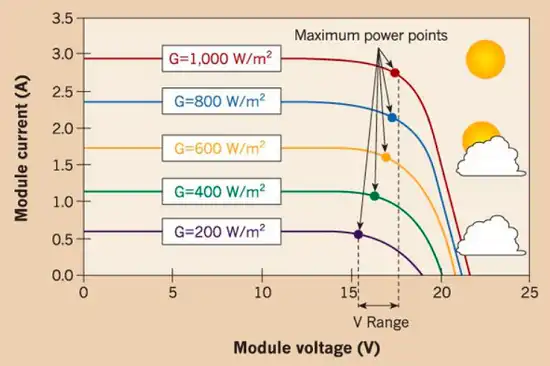
Methods to Stabilize Solar Panel Voltage
While some voltage fluctuation in solar systems is inevitable, there are methods to stabilize the output voltage within acceptable limits:
1. MPPT Charge Controllers
MPPT or Maximum Power Point Tracking charge controllers extract maximum available power from solar panels at the optimal voltage point. The MPPT algorithm dynamically tracks the peak power point, despite changing conditions. They also regulate the voltage to prevent overcharging batteries.
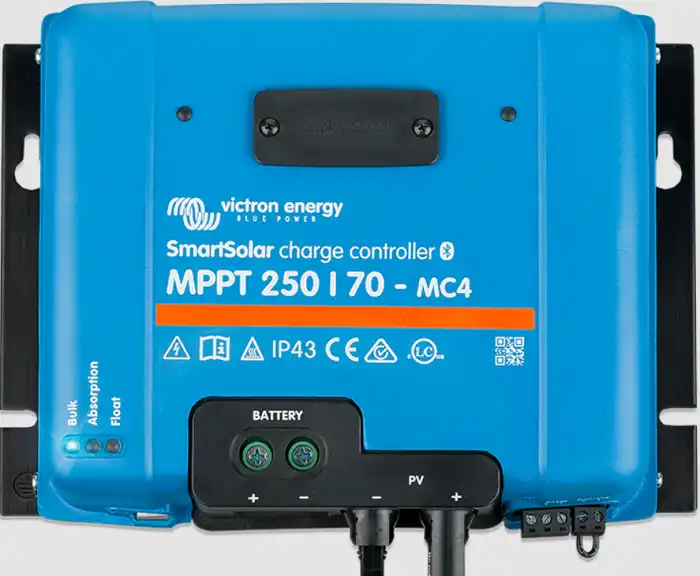
2. DC-DC Converters
DC-DC converters like buck-boost regulators can step up or step-down the DC voltage from solar panels to the required system voltage. They offer voltage regulation and isolation for sensitive loads. Off-grid inverters sometimes have integrated DC converters.
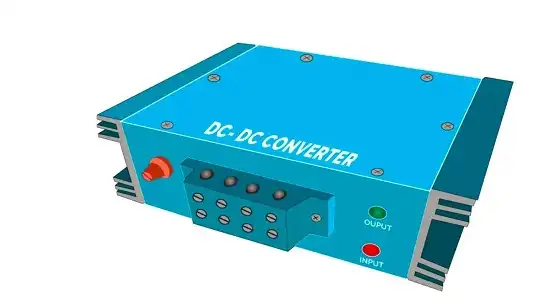
3. Solar Inverters with AFCI
Advanced solar inverters using Arc Fault Circuit Interrupters (AFCI) can detect electric arcs in the PV array wiring and disconnect to prevent fires. This minimizes the risk of voltage and current fluctuations due to faults.
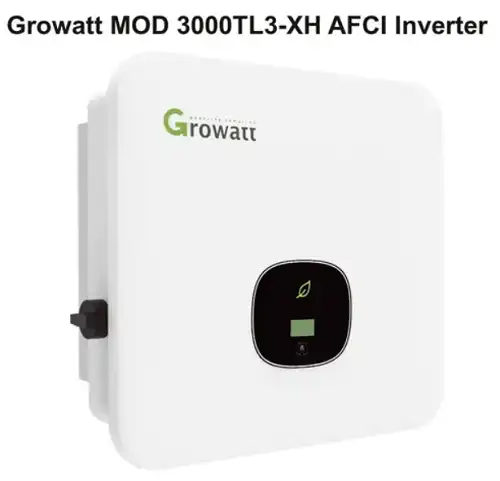
4. Solar Optimizers
Module-level power electronics (MLPE) devices like solar optimizers maximize energy harvest from each panel. They also reduce the effects of shading, soiling, and panel mismatches that can cause voltage dips.
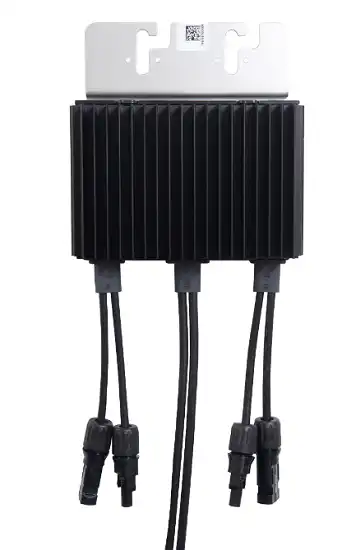
5. Energy Storage Systems
Pairing solar PV with energy storage like batteries or fuel cells evens out fluctuations and provides steady voltage. The storage regulates power delivery when solar input varies due to weather changes.
6. Proper System Design and Installation
Careful solar system design considering optimal string sizing, proper conductor ratings, overcurrent protection, earthing, and lightning protection minimizes voltage fluctuations. Strict adherence to codes and standards is essential.
7. Regular Inspection and Maintenance
Scheduled inspections, solar panel cleaning, vegetation management, and component replacement ensure the PV system operates optimally without voltage spikes.
With good system design and the right components, the voltage fluctuations from solar panels can be restricted to safe levels.
How Can We Prevent Voltage Drops In Solar Systems?
Voltage drops are unavoidable in solar systems due to inherent electrical losses. But there are ways to minimize excessive voltage drops:
- Use lower gauge (thicker) wires that reduce resistive losses over long runs. But balance thickness with cost.
- Keep wire runs as short as possible from panels to charge controllers/inverters.
- Use high-efficiency MPPT charge controllers and inverters that compensate for voltage drops.
- Ensure proper system design with appropriate string lengths and load calculation.
- Add solar optimizers or microinverters to each panel to minimize mismatches.
- Maintain tight connections, no loose wiring or faulty terminations.
- Use lightning arrestors and earthing to prevent surges that can cause temporary voltage dips.
- Install the solar array, wires, and equipment as per electrical codes and standards.
- Execute preventive maintenance and tighten loose connections annually.
- Replace old cables and faulty electrical components causing excessive voltage drop.
- Consider energy storage to supplement during low solar generation periods.
With careful system design, component selection and maintenance, the voltage drops in a solar system can be limited to 2-3%, ensuring efficient performance.
Typical Voltage Readings from Solar Panels during Operation
It is insightful to look at the actual voltage readings from grid-tied and off-grid solar panel installations to observe real-world fluctuation trends:
Grid-tied Rooftop Solar Panels (5 kW)
| Time | Solar Irradiance (W/m2) | Voltage (V) |
| 6 AM | 0 | 0 |
| 7 AM | 100 | 250 |
| 8 AM | 300 | 340 |
| 10 AM | 800 | 390 |
| 12 PM | 1000 | 405 |
| 2 PM | 800 | 397 |
| 4 PM | 600 | 375 |
| 6 PM | 200 | 255 |
| 7 PM | 50 | 0 |
The voltage ranges between 0-405V during the day, peaking at solar noon. It drops gradually in the afternoon as sunlight reduces.
Off-Grid Solar Cabin (1 kW)
| Time | Load | Voltage (V) |
| 6 AM | No load | 58 |
| 7 AM | Lights | 53 |
| 8 AM | Refrigerator | 49 |
| 9 AM | Full load | 47 |
| 12 PM | Full load | 44 |
| 3 PM | Full load | 42 |
| 5 PM | Lights | 48 |
| 8 PM | No load | 51 |
The off-grid voltage is more load-dependent and ranges between 42-58V. It is lowest when all loads are operating and peaks at no load.
These examples illustrate that voltage fluctuations follow predictable daily patterns based on solar resources and load consumption. Large unpredictable changes usually signify technical problems in the PV system.
FAQs about Solar Panel Voltage Fluctuations
Q1. Is It Normal For Solar Panel Voltage To Fluctuate Throughout The Day?
Yes, it is completely normal for solar panel voltage to vary over the course of the day, sometimes by over 10-15%. The key factors affecting voltage – solar irradiance, temperature, and connected electrical loads – change continuously. However, well-designed solar PV systems limit excessive fluctuations through regulators and inverters.
Q2. How Much Voltage Fluctuation Is Acceptable For Solar Panels?
Voltage fluctuations within 10-15% of the rated voltage are considered acceptable for solar panels. Extreme swings beyond this indicate faulty components or improper system configuration. Slow gradual voltage changes follow the diurnal solar cycle and load variations.
Q3. How Do I Stabilize Erratic Solar Panel Voltage?
Use MPPT charge controllers and solar inverters with smart tracking algorithms. Install DC-DC converters and solar optimizers for individual panels. Add energy storage to complement solar. Improve system design, wiring, earthing, and component ratings. Execute regular O&M and solar panel cleaning.
Q4. Can Fluctuating Solar Voltage Damage Appliances?
If the voltage fluctuates widely beyond appliance input voltage ratings, it can damage motors, and electronics and shorten the appliance’s lifetime. Use overvoltage/undervoltage protection devices and maintain the solar system properly to avoid voltage spikes.
Q5. Will Thicker Solar Cables Reduce Voltage Drop?
Yes, increased cable size reduces resistive losses and minimizes voltage drop across long cable runs from panels to inverters/batteries. But cables that are too thick increase costs unnecessarily. Proper cable sizing as per electrical codes balances voltage regulation and capital cost.
End Thoughts
Solar panel voltage fluctuations are a natural consequence of changing environmental conditions and load variations. However, smart system design and the use of voltage regulation equipment can restrict these swings within safe operating tolerances of 10-15%. Monitor key parameters daily to detect anomalies early before they affect critical loads. We hope this guide gave you a comprehensive understanding of managing solar panel voltage variability. Let us know if you have any other queries in the comments section below, and we will try to address them. Thank you for reading!

![[Explore] How Often Do Solar Panels Need to Be Replaced?](https://www.itekenergy.com/wp-content/uploads/2023/06/How-Often-Do-Solar-Panels-Need-to-Be-Replaced-768x428.webp)
